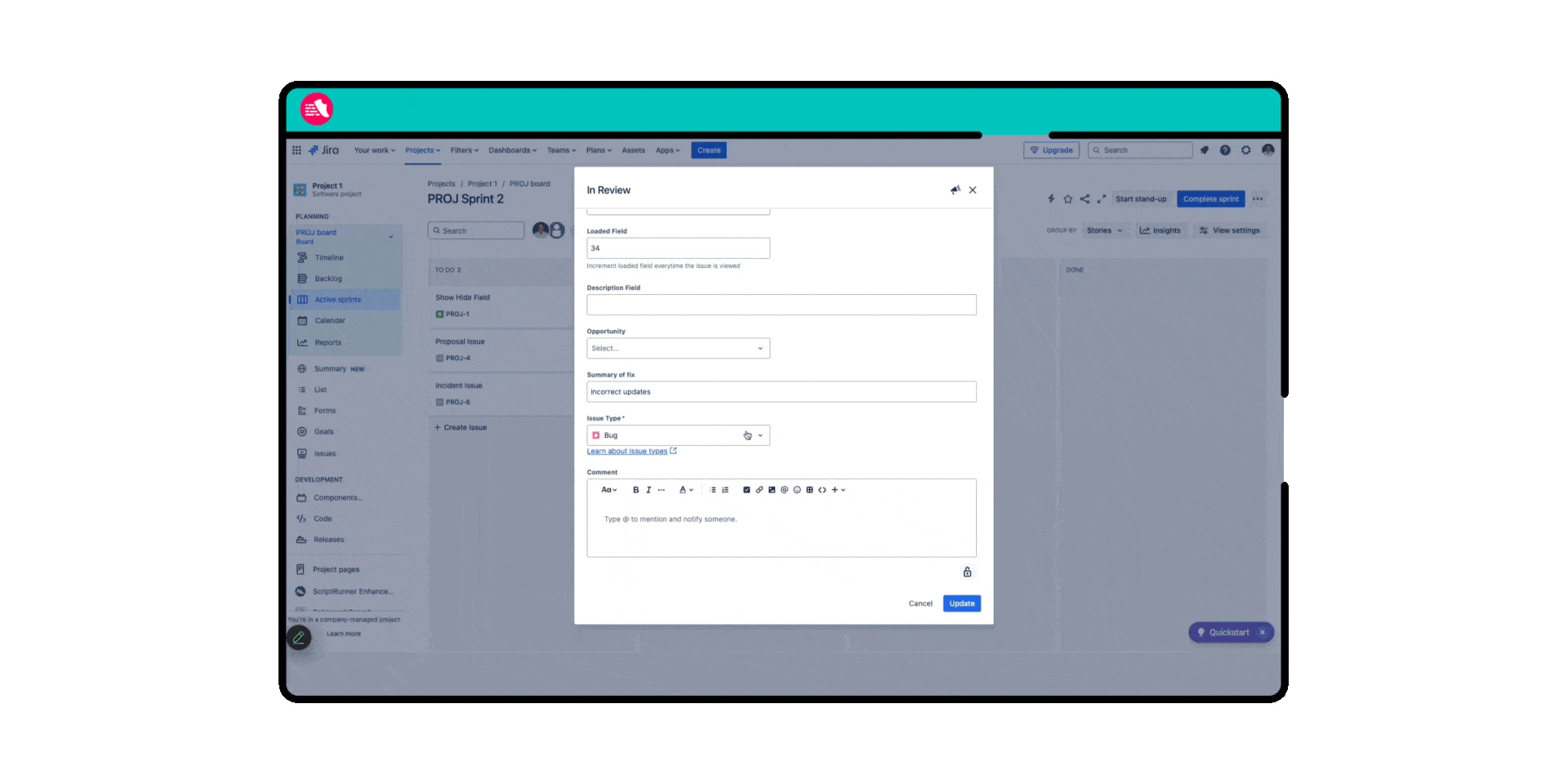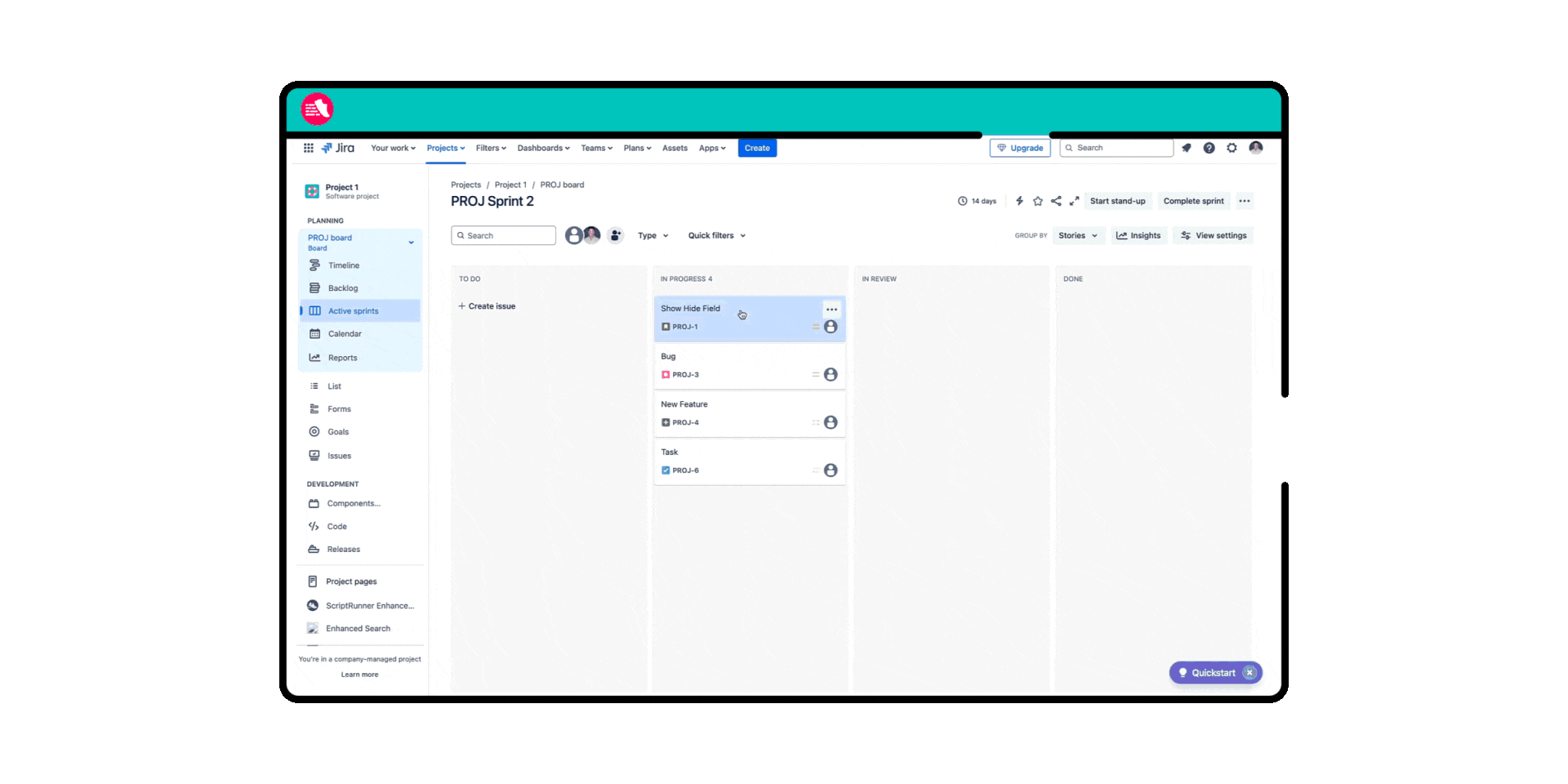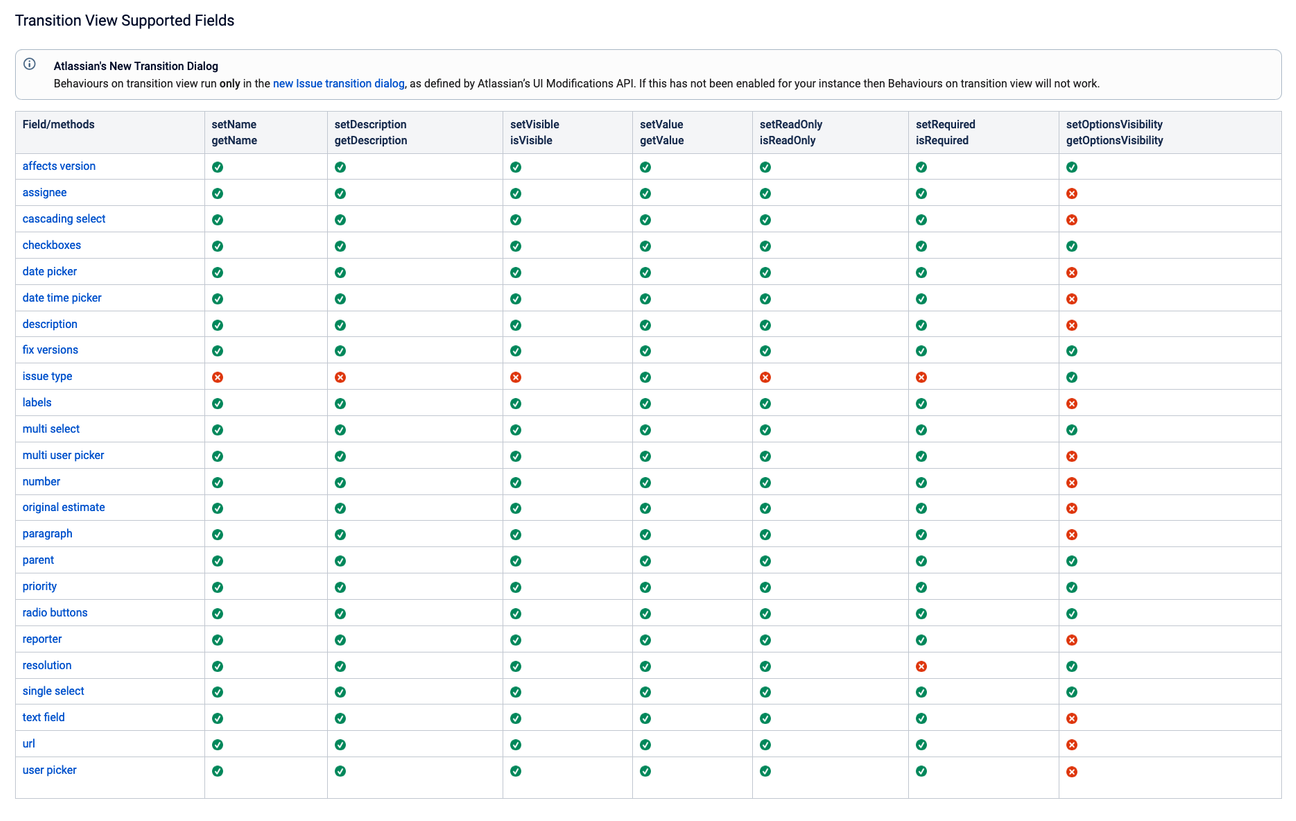Behaviours on Transition View has arrived in Jira Cloud
Your ability to customise fields in Jira Cloud just levelled up. You can now control field behaviour at any point in an issue's lifecycle: on Create View, Issue View, and now, on Transition View.
Behaviours 101: A quick refresher
If you're not yet familiar with it, Behaviours – one of the most popular ScriptRunner features – is the magic wand that lets you customise how fields behave in Jira, giving you ultimate control over your Jira issues. Whether you're applying conditional logic to make issue handling more efficient for your teams or tailoring Jira to fit your organisation's unique processes, Behaviours is the key to streamlined, efficient issue management.
Don’t have Behaviours yet?
Grab Behaviours, the ScriptRunner for Jira Cloud companion app, from the Atlassian Marketplace.
What can I do with Behaviours on Transition View?
Here's the rundown of fields now under your command as part of this first release of Behaviours on Transition View.
Get a complete list of all supported methods and field types across each issue screen from the Behaviours documentation.
We're working closely with Atlassian to prioritise new capabilities to add to the UI Modifications API to bring you even more field control. So rest assured, support for more fields is coming soon - watch this space!
Real-world magic with Behaviours on Transition View
Here are a few ideas where Behaviours can help your teams when transitioning issues. These examples use Behaviours to create 'if-then’ conditions on the Transition View.
1. Refine the list of resolution options to only show what’s relevant for your teams
Are your resolution options overflowing with irrelevant choices? Your teams may then find it difficult to choose the correct resolution, leading to reports full of inconsistent and incorrect selections!
Use Behaviours to display only the resolution options that are relevant to the user, or relevant for the project, and keep your Jira issues in order while making it easier and faster for your team.
Why stop there? Use this example as a template to refine other fields.
2. One transition screen with different fields for different issue types
With Behaviours, you can ensure that fields are displayed when they are needed most. You can display specific fields based on the issue type, and you don’t need a transition screen for each. For example, if you have a project where issues transition from the ‘In Progress’ status to ‘In Review’, you can create dynamic field changes on this transition screen so specific fields are displayed for each issue type. This means you can control all your issues in the same place, improving efficiency.

In this example:
- the ‘Bug’ issue type displays a paragraph field called ‘Summary of fix’
- the ‘Proposal’ issue type doesn’t have the ‘Summary of fix’ field, but displays a URL field called ‘Link to proposal’
- the ‘Incident’ issue type shows a single-select dropdown called ‘Severity’
3. Conditionally show or hide fields based on the selection in another field
One of our most popular use cases for Behaviours in the Create View and Issue View is showing or hiding a field based on what's selected in another field. So how can you use this type of responsive logic on the Transition View?
In this example, we have an issue transitioning from the “In Progress” status to “Complete”, with an “Opportunity” drop-down field to record whether the contract was won or lost. When the ‘Won’ option is selected, the ‘Contract value’ field appears on the issue screen. When the ‘Lost’ option is selected, the ‘Contract value’ field is hidden and the ‘Loss reason’ paragraph field is displayed instead.

The scenarios above are just the tip of the iceberg. From field manipulation to dynamic changes across all issue views, Behaviours is your ticket to a Jira that's more intuitive, more responsive, and perfectly aligned with your business and team processes.
Bonus: Screen tabs and more fields supported in Behaviours
Behaviours is also supported for conditionally managing screen tabs in an issue. You can now apply conditional logic to customise the behaviour of your tabs when creating, editing or transitioning an issue.
Support for the following fields has now been added to Behaviours:
- ‘due date’ on Create View
- ‘target start’ on Create View
- ‘target end’ on Create View
- 'Original Estimate' on Issue View
- 'Cascading Select' on Issue and Create View
View more video demonstrations
Start configuring Behaviours on Jira Cloud with the help of these demonstrations.
Behaviours on Transition View is here. Are you ready to redefine the way your fields in Jira behave?
Dive into Behaviours and turn your issue challenges into triumphs.



